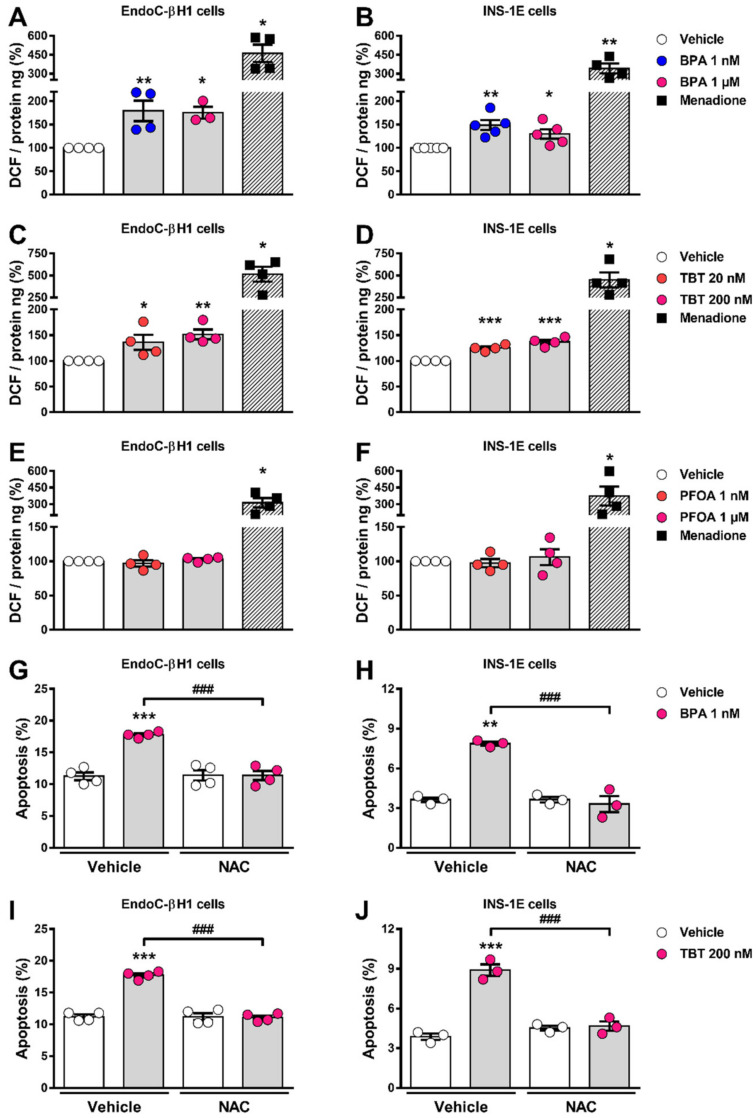Figure 4.
ROS production upon MDC exposure. EndoC-βH1 (A,C,E), and INS-1E (B,D,F) cells were treated with vehicle (DMSO) or different doses of BPA (A,B), TBT (C,D) or PFOA (E,F) for 24 h. Menadione (15 μM for 90 min) was used as a positive control. ROS production was measured by oxidation of the fluorescent probe 2′,7′-dichlorofluorescein diacetate (DCF) and normalized by total protein. Results are expressed as % vehicle-treated cells. EndoC-βH1 (G,I) and INS-1E (H,J) cells were treated with vehicle (DMSO), BPA (1 μM; G,H) or TBT (200 nM; I,J) in the absence or presence of N-acetylcysteine (NAC; 3 mM) for 24 h. Apoptosis was evaluated using HO and PI staining. Data are shown as means ± SEM (n = 3–5 independent experiments, where each dot represents an independent experiment). (A–F) * p ≤ 0.05, ** p ≤ 0.01 and *** p ≤ 0.001 vs. Vehicle. MDCs vs. Vehicle by one-way ANOVA; Menadione vs. Vehicle by two-tailed Student’s t test. (G–J) ** p ≤ 0.01 and *** p ≤ 0.001 vs. its respective Vehicle; ### p ≤ 0.001 as indicated by bars. Two-way ANOVA.

